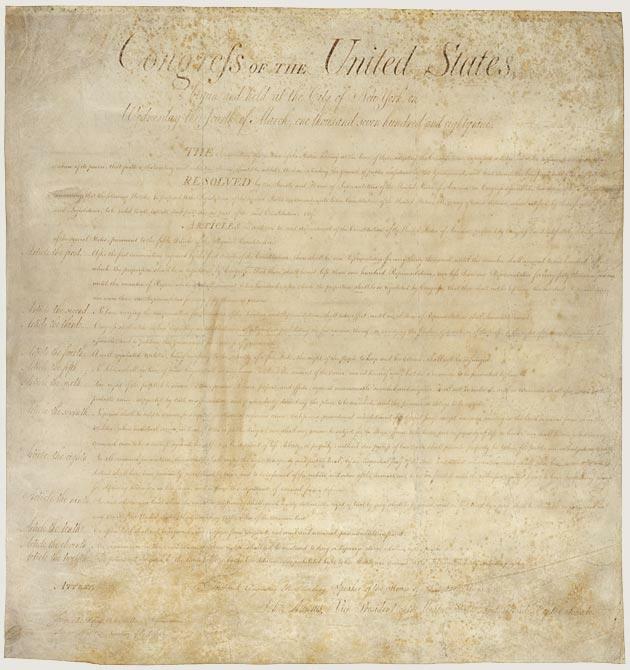The Bill of Rights is among the documents displayed at the National Archives in Washington as a critical piece of the United States history. It was created to address specific perceived inadequacies that surfaced after the ratification of the Constitution. The Bill contains guarantees of certain rights for individual people and states by restricting the powers of Congress. It also establishes that there are rights that are not present in the Constitution but that should be respected nevertheless. Ultimately, the document is an essential part of the founding text of the United States and is frequently used to defend the freedoms of the country’s citizens.

Origins and Context
James Madison proposed the Bill of Rights in 1789 amid debates on the viability of the recently ratified Constitution. A prominent faction of opponents to the system established in it, known as the anti-Federalists, appeared and voiced concerns over the centralization of power proposed in the document. They claimed that the Constitution did not respect individual freedom sufficiently and would effectively make the President gain control until he or she was equivalent to a monarch. Ultimately, the disagreeing sides saw the need for a compromise, and James Madison proposed a series of amendments. Congress debated the acceptance of the document but eventually ratified it after introducing several sets of changes.
Work Analysis Examples
The document did not have a significant impact when Congress first accepted it. Its purpose was to secure a foundation for the defense of the citizens’ rights if issues arose in the future. However, its clauses became relevant in the 19th century and still are now, as they helped maintain the power balance between the federal government and the individual citizens. The Ninth Amendment, as described in “The Bill of Rights” (n.d.), reserves a significant degree of power to the states and the people and opposes the presence of a powerful central force. The various cases involving freedom of speech, gun control, and other issues illustrate the necessity and foresight of the Bill.
The Second Amendment and Gun Control
The United States is among the world’s most pro-gun developed democracies, with firearm ownership significantly exceeding that in its contemporaries. The Second Amendment plays a significant role in this trend due to its guarantee of the right of the people to keep and bear arms (“The Bill of Rights,” n.d.). The constitutional guarantee of gun ownership is preventing substantial restrictions, such as what happened in New Zealand (Gottlieb, 2019).
The debates between people who promote the restriction or prohibition of firearms and those who oppose governmental control have been ongoing for decades. In other countries, governments were able to impose limitations without meaningful opposition, possibly ignoring freedoms in the process.
Conclusion
The Bill of Rights is essential to the history of the United States as a country. Introduced in 1789 as a result of opposition to the Constitution, it imposed restrictions on the government and secured critical rights for the American people. The document was intended to stop the federal government from amassing too much power and has generally succeeded at the task. Some of its positions, such as the Second Amendment, have been the topic of considerable debate. However, provoking discussion as opposed to having the government make decisions without consulting the people was the purpose of the document, and so it has succeeded.
References
The Bill of Rights [Image]. (n.d.). Web.
Gottlieb, A. (2019). No gun law would have prevented the Virginia Beach tragedy. Press Connects. Web.